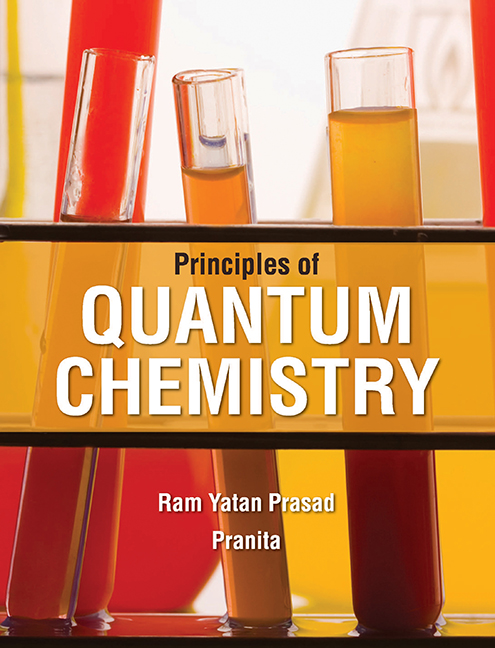Book contents
- Frontmatter
- Dedication
- Contents
- List of Figures
- List of Tables
- Foreword
- Preface
- 1 Quantum Theory
- 2 Wave–Particle Duality
- 3 Mathematical Techniques
- 4 Quantum Mechanical Operators
- 5 Postulates of Quantum Mechanics
- 6 The Schrödinger Equation
- 7 Playing with the Schrödinger Equation
- 8 Hydrogen Atom
- 9 Approximate Methods
- 10 Diatomic Molecules
- 11 Multi-electronic Systems
- 12 Polyatomic Molecules
- 13 Hückel Molecular Orbital Theory/Method
- 14 Density Functional Theory
- Glossary
- Appendix I
- Appendix II
- Appendix III
- Model Question Papers
- Index
9 - Approximate Methods
Published online by Cambridge University Press: 02 December 2022
- Frontmatter
- Dedication
- Contents
- List of Figures
- List of Tables
- Foreword
- Preface
- 1 Quantum Theory
- 2 Wave–Particle Duality
- 3 Mathematical Techniques
- 4 Quantum Mechanical Operators
- 5 Postulates of Quantum Mechanics
- 6 The Schrödinger Equation
- 7 Playing with the Schrödinger Equation
- 8 Hydrogen Atom
- 9 Approximate Methods
- 10 Diatomic Molecules
- 11 Multi-electronic Systems
- 12 Polyatomic Molecules
- 13 Hückel Molecular Orbital Theory/Method
- 14 Density Functional Theory
- Glossary
- Appendix I
- Appendix II
- Appendix III
- Model Question Papers
- Index
Summary
The hydrogenic system, i.e., hydrogen atom or any one-electron-containing-an-ion system, is the only chemical system for which an exact solution of Schrödinger equation is known. In case of the problem related to many electrons atomic systems and molecules, the equations obtained are found to be too complex to be solved exactly. In other words, we can say that apart from a few simple cases, the solution of the Schrödinger equation is impossible in closed form. In many electron systems, the electrons interact with each other and the solutions of the equation obtained become difficult due to many potential energy terms.
Under the above circumstances, approximate methods or theories have been applied to get the solution. These approximate methods or theories are as follows:
• Perturbation theory or method
• Variation theorem or method
We shall acquire knowledge about each theory or method one by one.
Perturbation theory/method for non-degenerate states
If a chemical system is subjected to an electric or a magnetic field, the system becomes disturbed or perturbed. Under this situation, the system under consideration differs from an exactly solvable system by only a small disturbance, enabling an approximation to be carried out by expanding in powers of a smallness parameter.
Let H = perturbed Hamiltonian
H0 = zero order Hamiltonian without disturbance or perturbation of the system or zero order unperturbed Hamiltonian whose solution is known
(H − H0)= change/difference between perturbed and unperturbed Hamiltonian. H differs from H0 by only a small amount.
Then the effect of (H − H0) can be taken into account by utilising the perturbation theory. Further, let us consider that H0 has a spectrum of given values
Then we can express the Schrödinger equation as
It has been assumed that H is slightly different from H0 due to perturbation. Then H can be expressed as a polynomial in a perturbation parameter as
where, H0 = first order perturbation correction
H00 = second order perturbation correction
H000 = third order perturbation correction and so on (the magnitude of
perturbation is found to be inversely proportional to order)
- Type
- Chapter
- Information
- Principles of Quantum Chemistry , pp. 331 - 418Publisher: Foundation BooksPrint publication year: 2014

